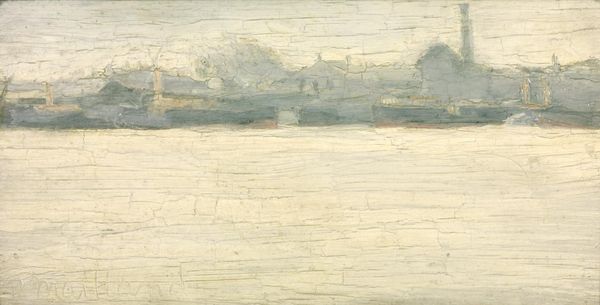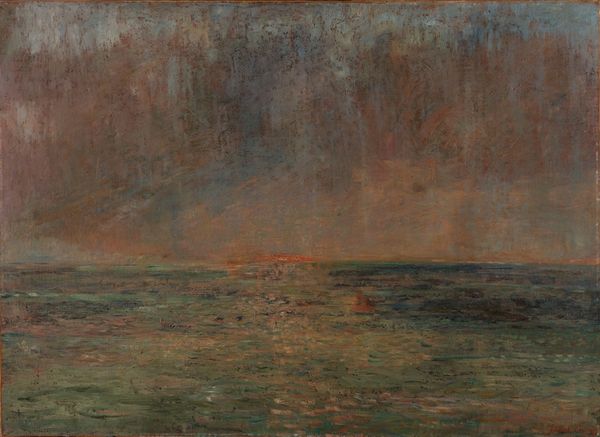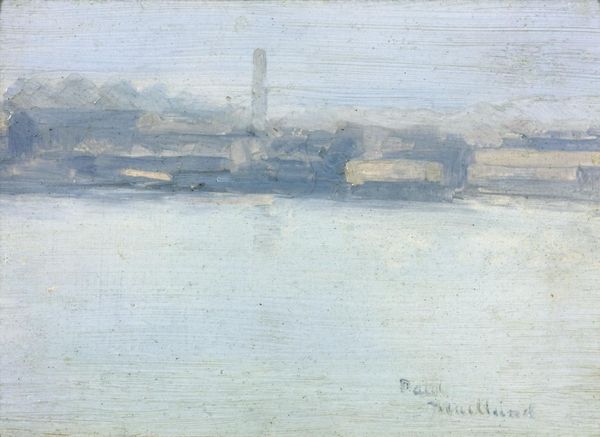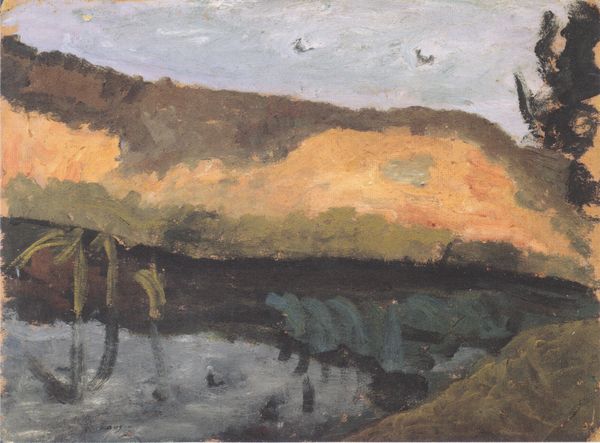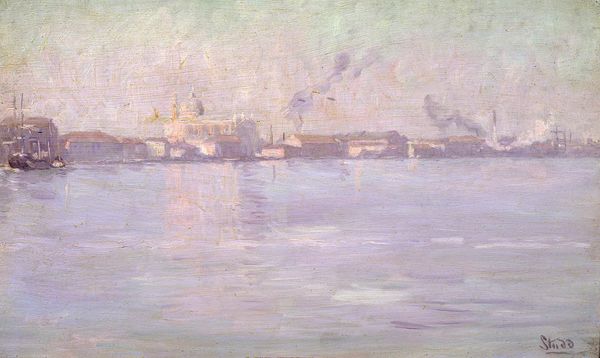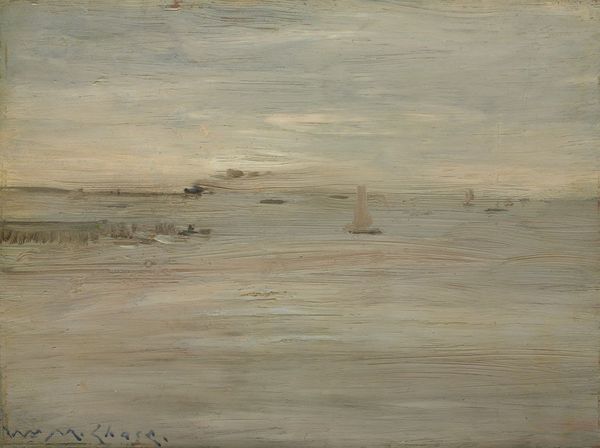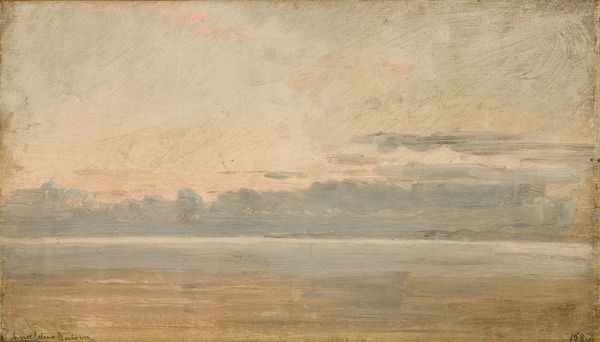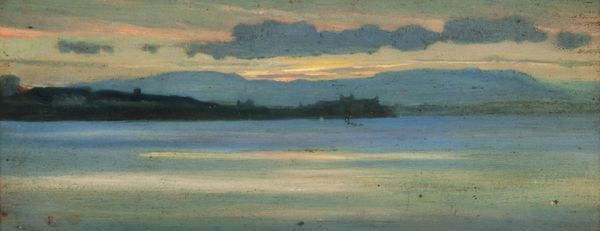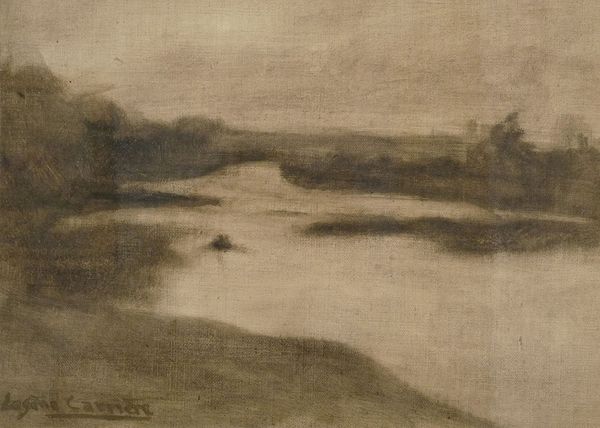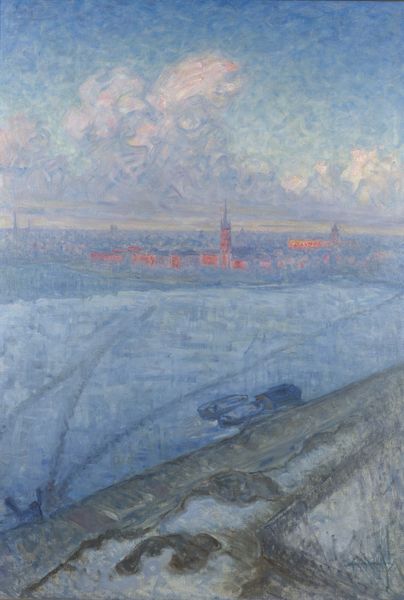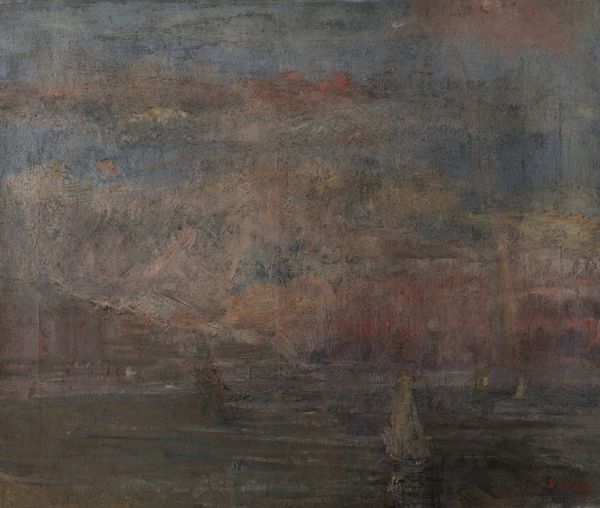
Copyright: Public Domain: Artvee
Editor: Tadeusz Makowski's "Bridge on the Seine," painted in 1908, rendered in tempera. It’s quite a subdued painting, all muted blues and greys. What can you tell me about it? Curator: I see a meditation on the industrial means that produce both the bridge itself, and, significantly, the very materials Makowski employed. Consider tempera - the binding of pigment relies on readily available substances, traditionally egg yolk, a departure from pricier oil paints, placing it more within a lineage of craft than "high art," if you will. Editor: So you're saying that his choice of materials has significance? Curator: Precisely. The bridge, a symbol of industrial progress and social connection, is constructed, assembled, by laborers. The paint, similarly, requires specific, physical means for production. Makowski subtly directs our attention to labor itself as the subject, much like the Impressionists’ engagement with modern life and the city’s constant state of material flux. What textures do you observe? Editor: The surface seems rough, not smooth like you'd expect from some other tempera paintings. It gives a tactile quality. Curator: It emphasizes the manual process, wouldn’t you say? A tension exists here: mass-produced elements composing the bridge represented using artisanal materials, applied directly. The image encourages reflection on industrialism's impact on individual experience. Editor: So, instead of just seeing a pretty picture of Paris, we’re supposed to consider the conditions that made it, and the picture itself, possible? Curator: Exactly. It becomes a visual document of material relationships and production processes central to early 20th-century life. Editor: I see it now – it's not just a scene, it's about how things are made and what that means. Thank you. Curator: A pleasure. Always question the assumed separation between art and its conditions of production.
Comments
No comments
Be the first to comment and join the conversation on the ultimate creative platform.
